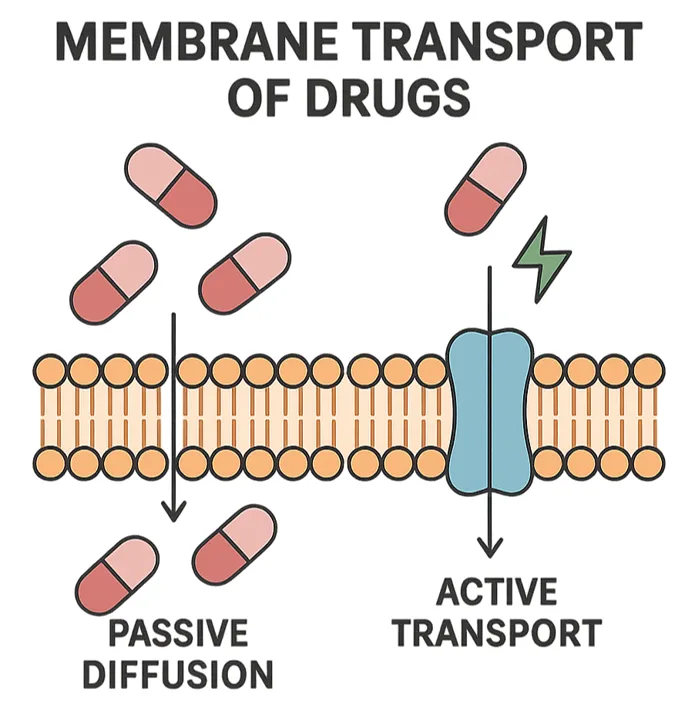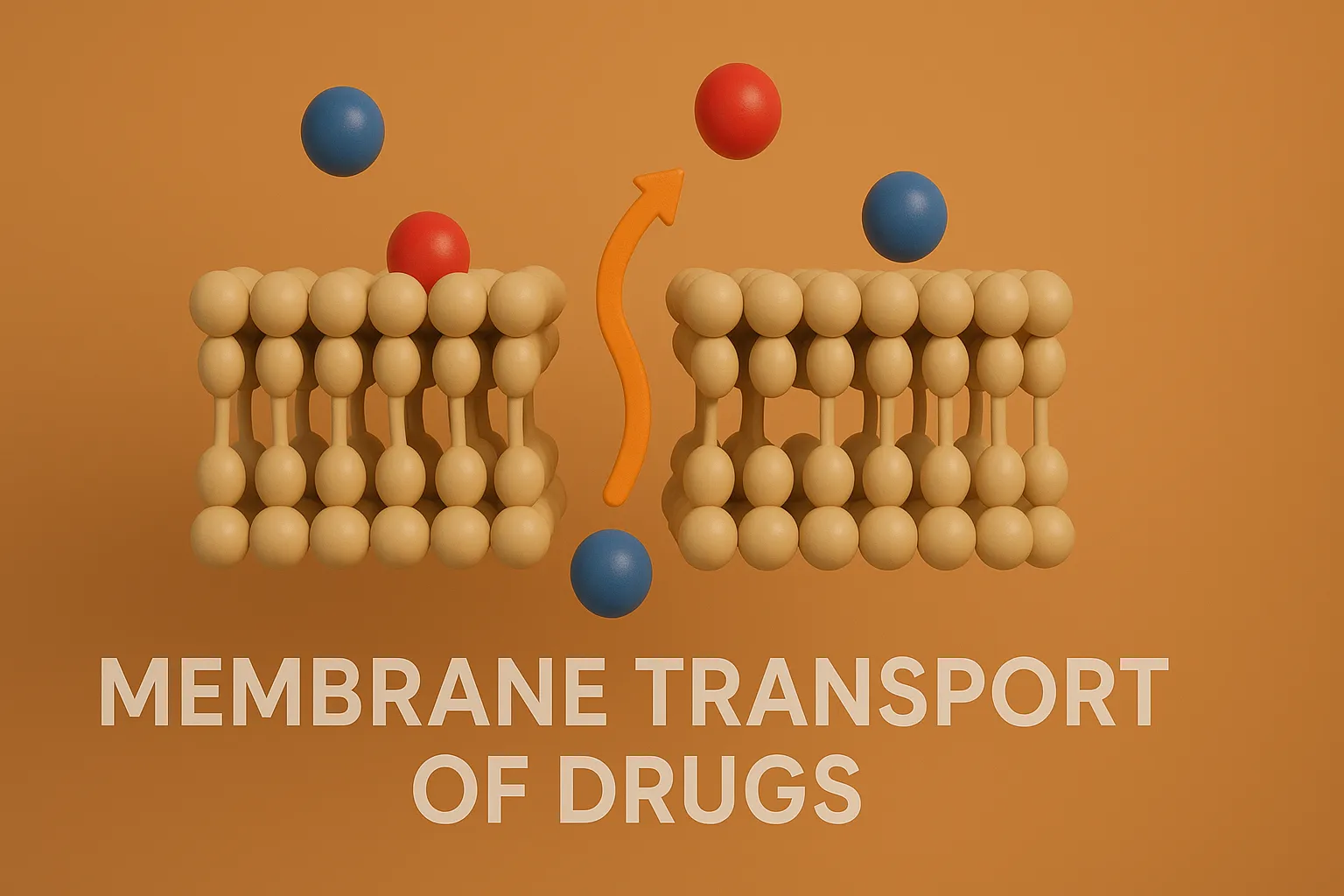Membrane Transport of Drugs involves processes like passive diffusion, facilitated diffusion, active transport, and endocytosis for drug movement across cell membranes.
Membrane Transport of Drugs
- Understanding how drugs cross biological membranes is crucial to all processes of pharmacokinetics (ADME).
- Biological membranes are primarily lipid bilayers interspersed with proteins.

Several mechanisms allow drugs to traverse these membranes:
-
Passive Diffusion
- Most common mechanism for many drugs.
- Dependent on the concentration gradient (high → low).
- Does not require energy.
- Best suited for lipid-soluble (lipophilic) drugs that can easily pass through the hydrophobic core of the membrane.
- Rate is influenced by: lipid solubility, degree of ionization (pKa), molecular size, thickness of the membrane, and the area of absorption.
-
Facilitated Diffusion
- Utilizes a carrier protein or a specific transporter embedded in the membrane.
- Moves drugs down the concentration gradient (no direct energy required).
- Saturable and subject to competition (different substances may use the same transporter).
-
Active Transport
- Also uses carrier proteins but can move drugs against their concentration gradient.
- Requires energy (ATP) directly or indirectly.
- Saturable and can be inhibited by substances competing for the same transporter.
- Example: transport of levodopa across the blood-brain barrier via amino acid transporters.
-
Endocytosis and Exocytosis
- Endocytosis: The cell membrane engulfs the drug particle (often larger molecules like protein drugs) forming a vesicle.
- Exocytosis: The vesicle fuses with the cell membrane to release its contents outside the cell.
- Examples: Vitamin B12 absorption in the gut involves receptor-mediated endocytosis.
-
Ion-Pair Transport
- Some highly ionized drugs can form neutral complexes (ion pairs) with endogenous substances that facilitate passive transport across membranes.
Click Here to Watch the Best Pharma Videos

